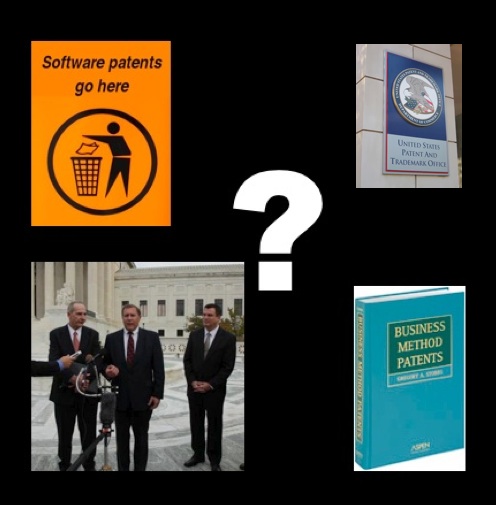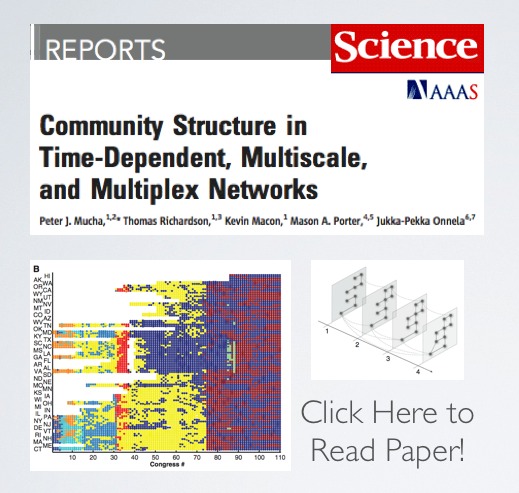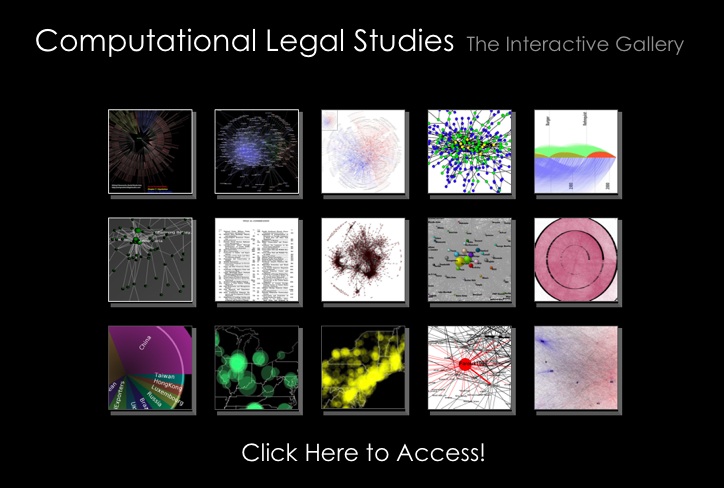Check out this nice infographic! [HT RC Richards @ Legal Informatics Blog]
As Science Evolves, How Can Science Policy?
The above image is directly linked to the NBER paper. Here is a link to a story covering the release of the paper. [Hat Tip to Marginal Revolution]
The Bilski Case: Still Waiting for the Supreme Court’s Decision
Along with a non-trivial subset of the legal blogosphere, we eagerly await the Supreme Court’s decision in the Bilski case. Perhaps tomorrow will be the day? In the meantime, here are a variety of thoughts on the matter. Bilski Blog / EFF / Now Europe / PatentlyO / GenomicsLawReport / Ipwatchdog / Fenwick&West / InsideCounsel. This one from Greg Laden is also fun.
Community Structure in Time-Dependent, Multiscale and Multiplex Networks [ Via Science ]
This morning I participated in the first set panels at the Duke Political Networks Conference. Our panel was entitled “Dynamic Networks.” On the panel was Peter Mucha from UNC-Math, who presented Community Structure in Time-Dependent, Multiscale, and Multiplex Networks [Mucha, Richardson, Macon, Porter, Onnela].
Suffice to say, this is a very exciting paper. Indeed, the paper is in this week’s edition of Science Magazine. The article fills an important hole in the broader literature and I believe the approach outlined therein will be adopted by many scholars.
Here is the abstract: “Network science is an interdisciplinary endeavor, with methods and applications drawn from across the natural, social, and information sciences. A prominent problem in network science is the algorithmic detection of tightly connected groups of nodes known as communities. We developed a generalized framework of network quality functions that allowed us to study the community structure of arbitrary multislice networks, which are combinations of individual networks coupled through links that connect each node in one network slice to itself in other slices. This framework allows studies of community structure in a general setting encompassing networks that evolve over time, have multiple types of links (multiplexity), and have multiple scales.”
Nicholas Christakis: The Hidden Influence of Social Networks [ Ted 2010 ]
If this does not load please click here to access the TED page.
Computational Legal Studies – The Interactive Gallery
Click on the above picture and you will be taken to the Interactive Gallery of Computational Legal Studies. Once inside the gallery, click on any thumbnail to see the full size image. Each image features a link to supporting materials such as documentation and/or the underlying academic paper. We hope to add more content to gallery over the coming weeks and months — so please check back! Please note that load time may vary depending upon your connection, machine, etc.
NetSci 2010 — MIT Media Lab
Tomorrow is the first day of presentations at NetSci2010. Our paper will presented in AM Network Measures Panel. Anyway, for those interested in leveraging network science to study the dynamics of large social and physical systems — the conference promises a fantastic lineup of speakers. Check out the program!
Elena Kagan to be the Next US Supreme Court Justice? [Via Intrade]
Still no announcement from the White House but there has been some movement over at Intrade … Click Here for Most Recent Chart [From Intrade.com]
Computational Legal Studies Presentation Slides from the Law.gov Meetings
Thanks to Carl Malamud and the good folks at the University of Colorado Law School and University of Texas Law School for allowing us to participate in their respective law.gov meetings. For those interested in governmental transparency, we believe that Carl Malamud’s on-going national conversation is very important. The video above represents a fixed spaced movie combining the majority of the slides we presented at the two meetings. If the video will not load, click here to access the YouTube Version of the Slides. Enjoy!












